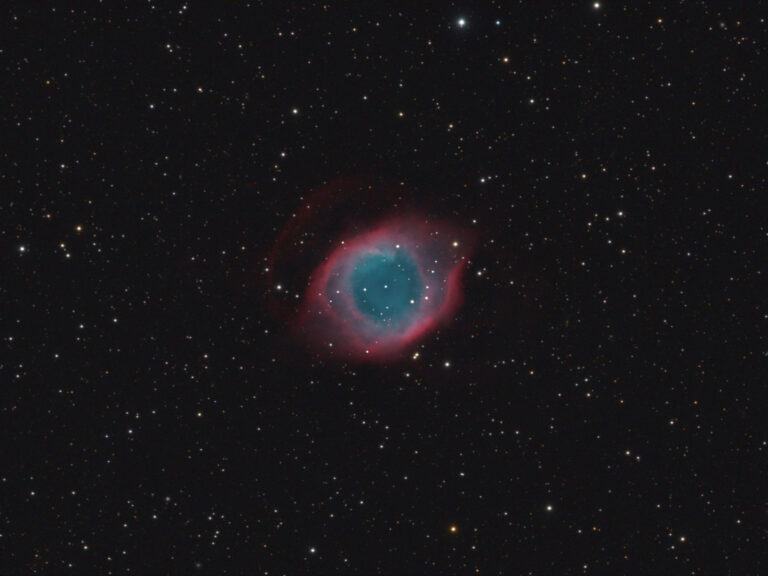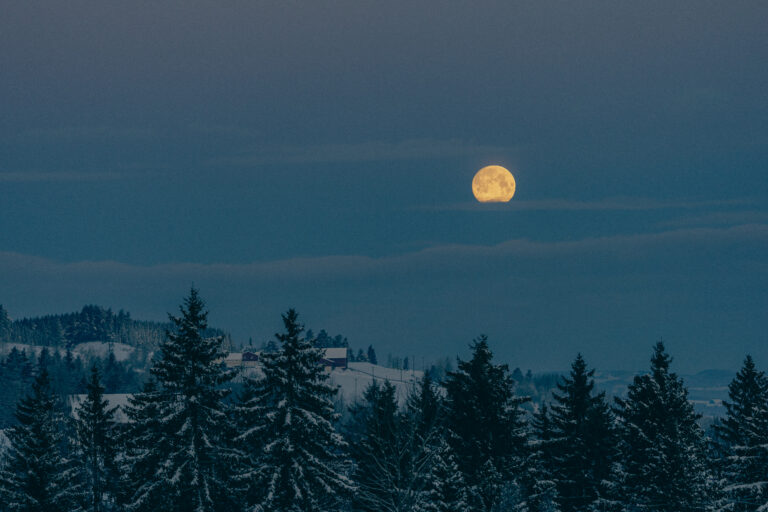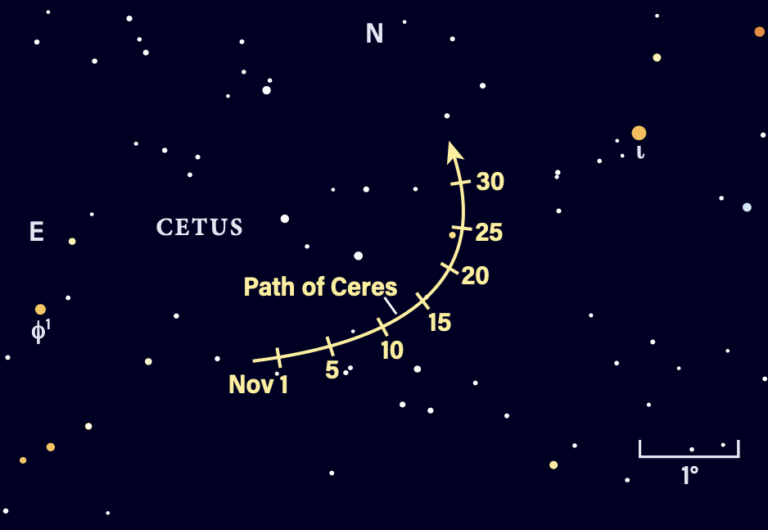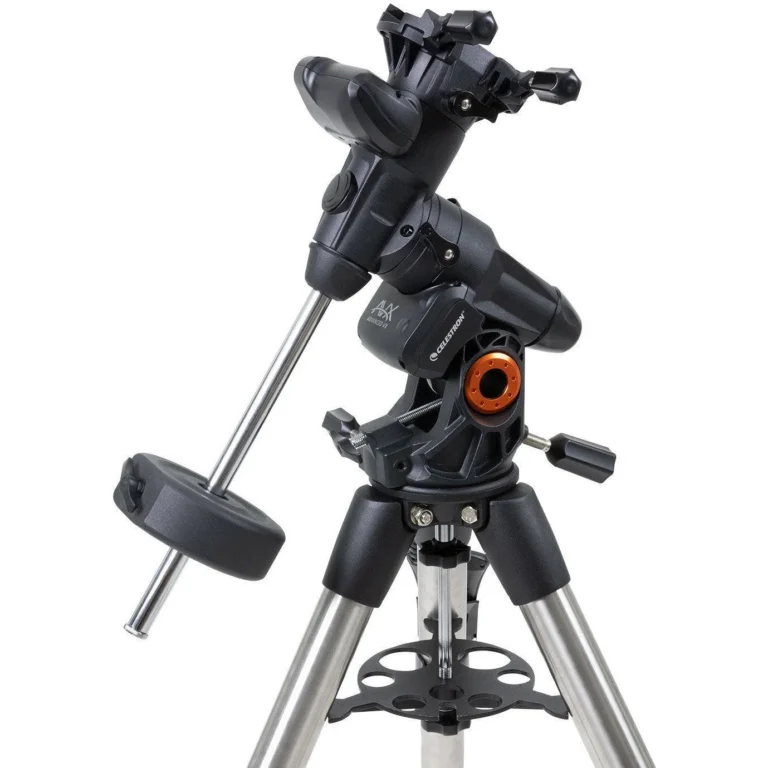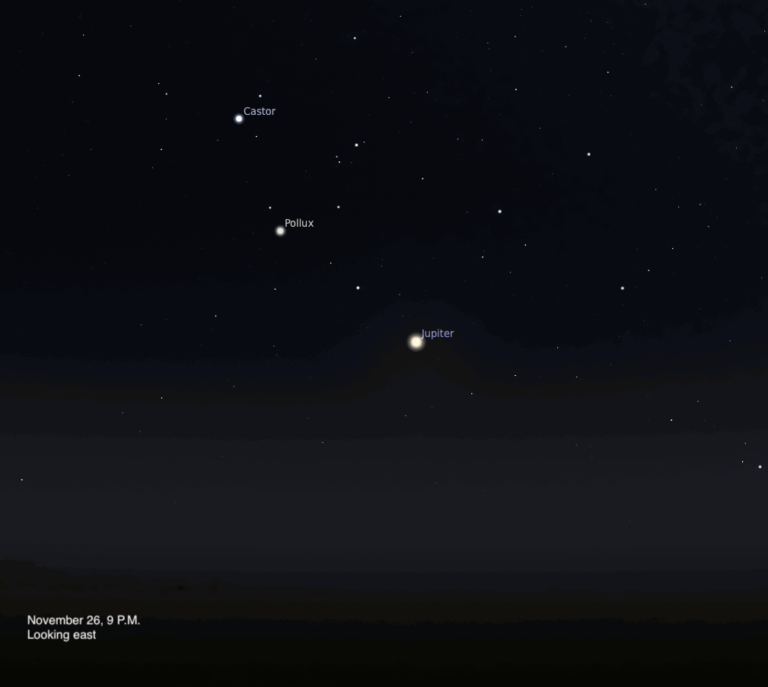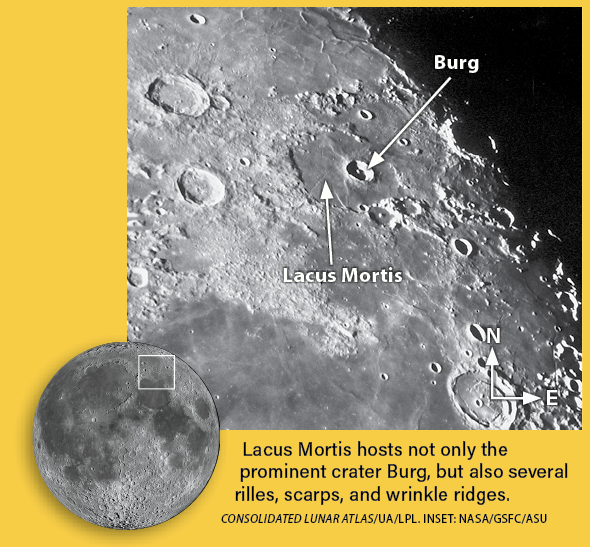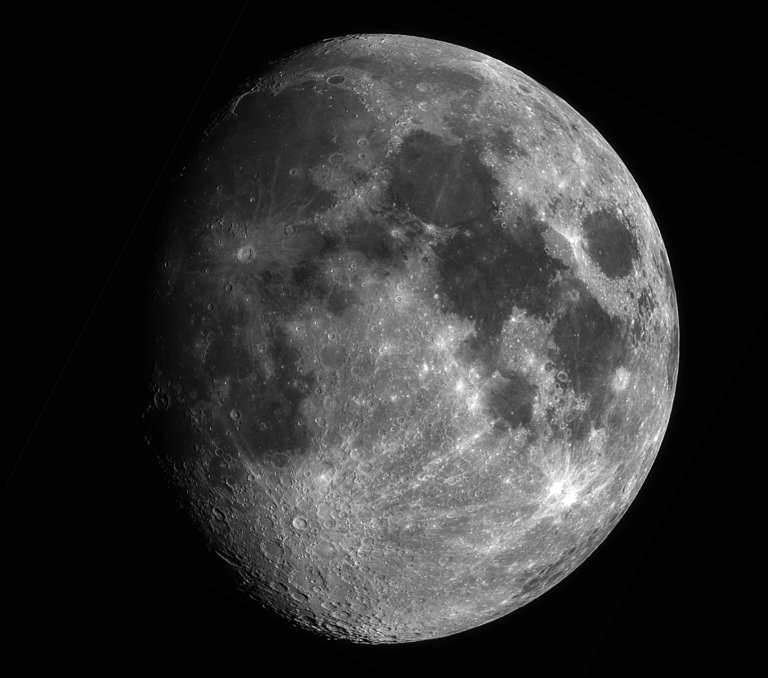Key Takeaways:
The cloud contains the 6-million-year-old Perseus OB2 Association, a loosely organized moving group of young, hot stars that includes a naked-eye triangle of stars — 4th-magnitude Menkib (Xi [ξ] Persei), 3rd-magnitude Zeta (ζ) Persei, and 4th-magnitude Atik (Omicron [ο] Persei) — as well as 5th-magnitude 40 Persei. So, the naked eye alone can already spot the second-closest OB association to the Sun, the first being the Scorpius-Centaurus Association. We’ll begin with one of those naked-eye stars, Zeta Persei, which is a stunning, if not baffling, telescopic object.
When I first looked at Zeta Persei through my 8-inch reflector at 45x, I immediately saw two companions — a pair of roughly 9.5-magnitude stars some 2′ to its south. But greater magnification revealed what is arguably Zeta’s only true companion: a 9th-magnitude fleck of ashen light 13.4″ to the south-southwest (at position angle 210°).
The great difference in magnitudes will make this partner a challenge to see through smaller telescopes, and experience has shown that poor seeing will thwart chances in larger ones. So cool down your scope, use magnifications of 120x or greater, and look during deep astronomical twilight. To my eyes, the primary shines with a pale aqua hue, while its dimmer companion is a smoggy gray. Also check out its roughly 11th-magnitude companion 34″ to the west-northwest (p.a. 289°). It’s often overlooked in a quick view and is challenging to see.
Let’s head northward now to catch the “runaway star” Menkib. With a surface temperature six times greater than that of our Sun, this O-type star features many superlatives. Not only is it one of the hottest stars visible to the unaided eyes, but it is also one of the most massive (weighing in at around 40 solar masses). It’s also one of the few runaway stars visible without optical aid, and the first runaway star to be identified by its radial velocity alone.
Whisking away from us at a velocity of 37 miles per second (60 km/sec), the speedy star is now some 16 light-years from its birthplace at the center of the Per OB2 Association — roughly midway between Zeta and Omicron Persei. What caused Menkib to “run away” was most likely a massive companion exploding as a supernova.
American astronomer Edward Emerson Barnard discovered this swath of emission nebulosity in 1884 while using a 6-inch refractor to sweep for comets north-northeast of Menkib. Dark skies are required to see the ill-defined glow, which appears as a 2.5°-by-0.5° “wall” of celestial mist that more than fills most low-power eyepieces. Seeing it well requires low power, a wide field, and careful sweeping techniques. A Hydrogen-beta filter will enhance the view dramatically, especially through binoculars. Can you see it with your unaided eyes with that filter?
A wide and uneven double star, 40 Persei (Struve 431), lies about 3¾° west-southwest of Menkib. Its location in the dusty Per OB2 Association dims the components by two magnitudes. A remarkable star, the primary shines with a luminosity 24,000 times that of the Sun. The 5th-magnitude star has a 10th-magnitude companion 26″ to the west-southwest (p.a. 243°).
Our next target, Atik (Burnham 535), is a double star with an aggravating situation. The two stars (magnitudes 4 and 8.5) have a clean separation of 1.0″, which on paper looks like a challenge for a 5-inch scope. But users of an 8-inch reflector may have problems as well, because the dim secondary is not only in the glare of its primary, but also near the position of the primary’s first diffraction ring. How frustrating is that? I recommend magnifications in the range of 300x or greater on the steadiest of nights during deep astronomical twilight.
The most active star-forming region in the Perseus molecular cloud is another overlooked visual wonder: the simple yet beautiful reflection nebula and cluster NGC 1333. Located at the western border of the complex, it hugs the Taurus-Aries border some 3¼° southwest of Atik. At magnitude 5.7, this nebula spans only 10′. Eduard Schönfeld discovered NGC 1333 in the 1850s with the 3.1-inch Fraunhofer comet-seeker at Bonn Observatory in Germany. It seems to show the face of a shy specter masked in a white veil. A magnitude 10.5 star illuminates the nebula and adorns it like the crown jewel in a phantom diamond tiara.
About 10 stars of 8th magnitude and fainter are easily visible through modest-sized telescopes, including two doubles. Through my 8-inch, the nebula is immediately apparent as a circular, frosty glow around the northeastern pair of stars — like distant streetlights seen through a frosted window pane. Those with larger apertures should be able to spy the miniscule reflection nebula hugging the 8th-magnitude star immediately to the east of Atik.
The cluster is adjacent to the dark cloud known as Barnard 4. While this is a difficult object visually, sweeping back and forth from IC 348 to the northern border of Taurus with a wide-field eyepiece may yield a 30′-wide absence of stars. It’s a subtle visual effect, and one must be alert to see the difference, but the effect is real, as the region has an extinction of two magnitudes. While Barnard 4 is part of the Perseus Molecular Cloud, it is an extension of the Taurus dark clouds to the northwest and has an opacity rating of 6 (the darkest level).
Return to Zeta Persei and then slide 6° to the east-southeast to find NGC 1579, sometimes called the Northern Trifid Nebula. This 12′-by-8′ mottled reflection nebula, combined with a dusty star-forming region, appears like a bright, milky smudge through a 5-inch refractor at 33x. Increasing the magnification by a factor of two or more will reveal a bright core with a southern “pad” of nebulosity with three “toes,” making it look like a dinosaur’s ghostly footprint. While we have ventured far from the Per OB2’s bright triangle of stars on the two-dimensional sphere, NGC 1579 may lie 2,000 light-years distant at the back of the Per OB2 Association’s supershell, where it is interacting with the neighboring Taurus Molecular Cloud Complex.
I hope you have enjoyed this glimpse into one of the Milky Way’s youthful nooks. Send any observations of note to sjomeara31@gmail.com.







